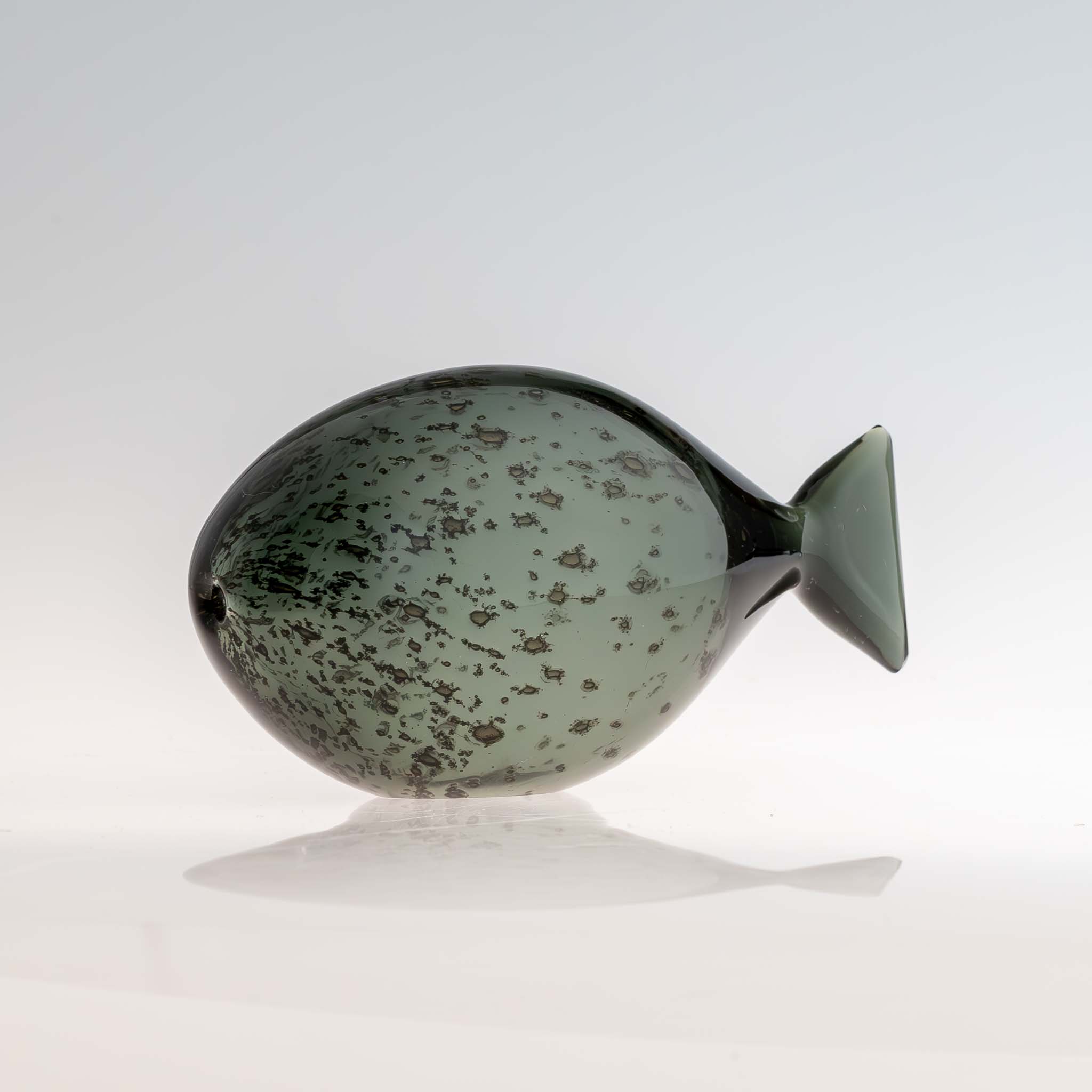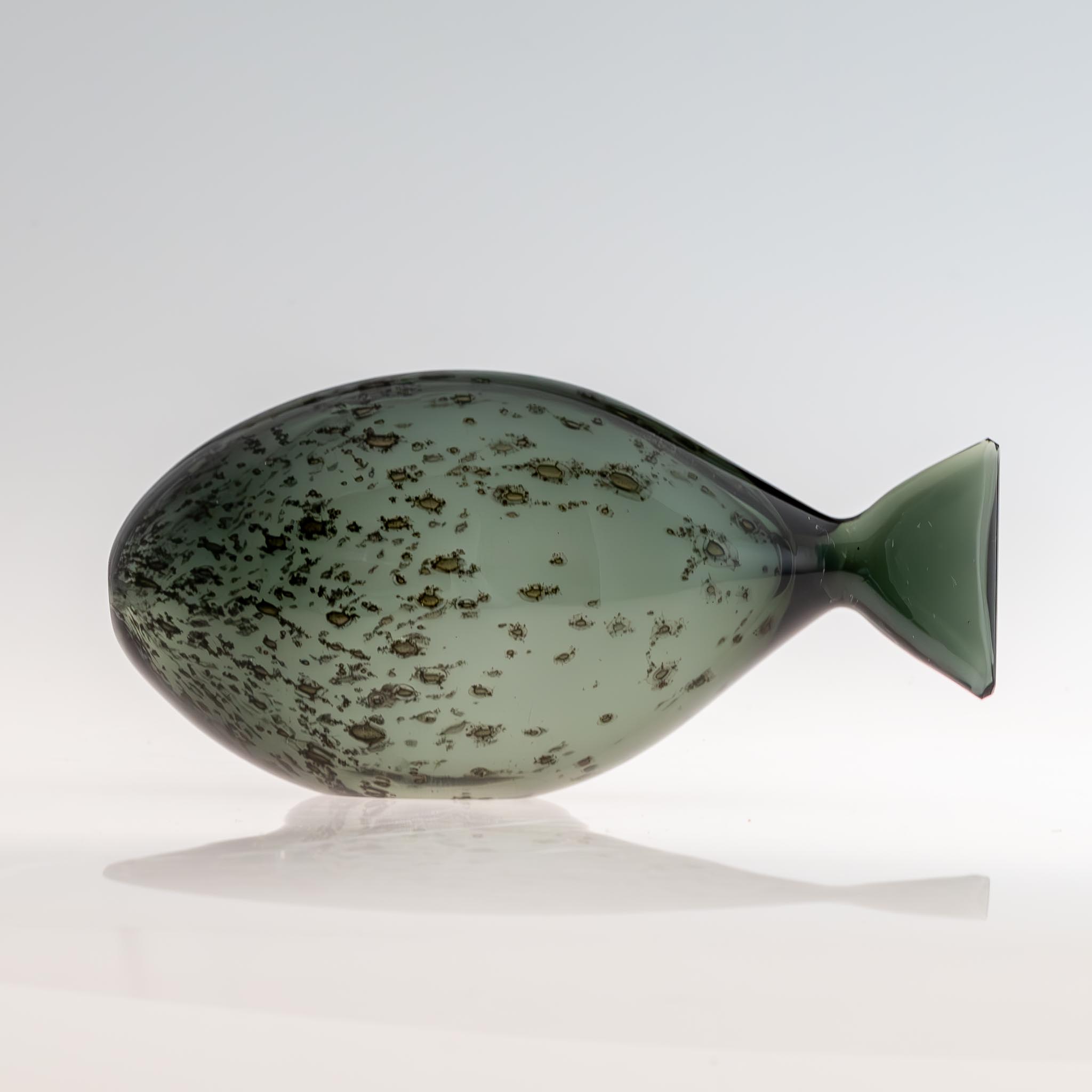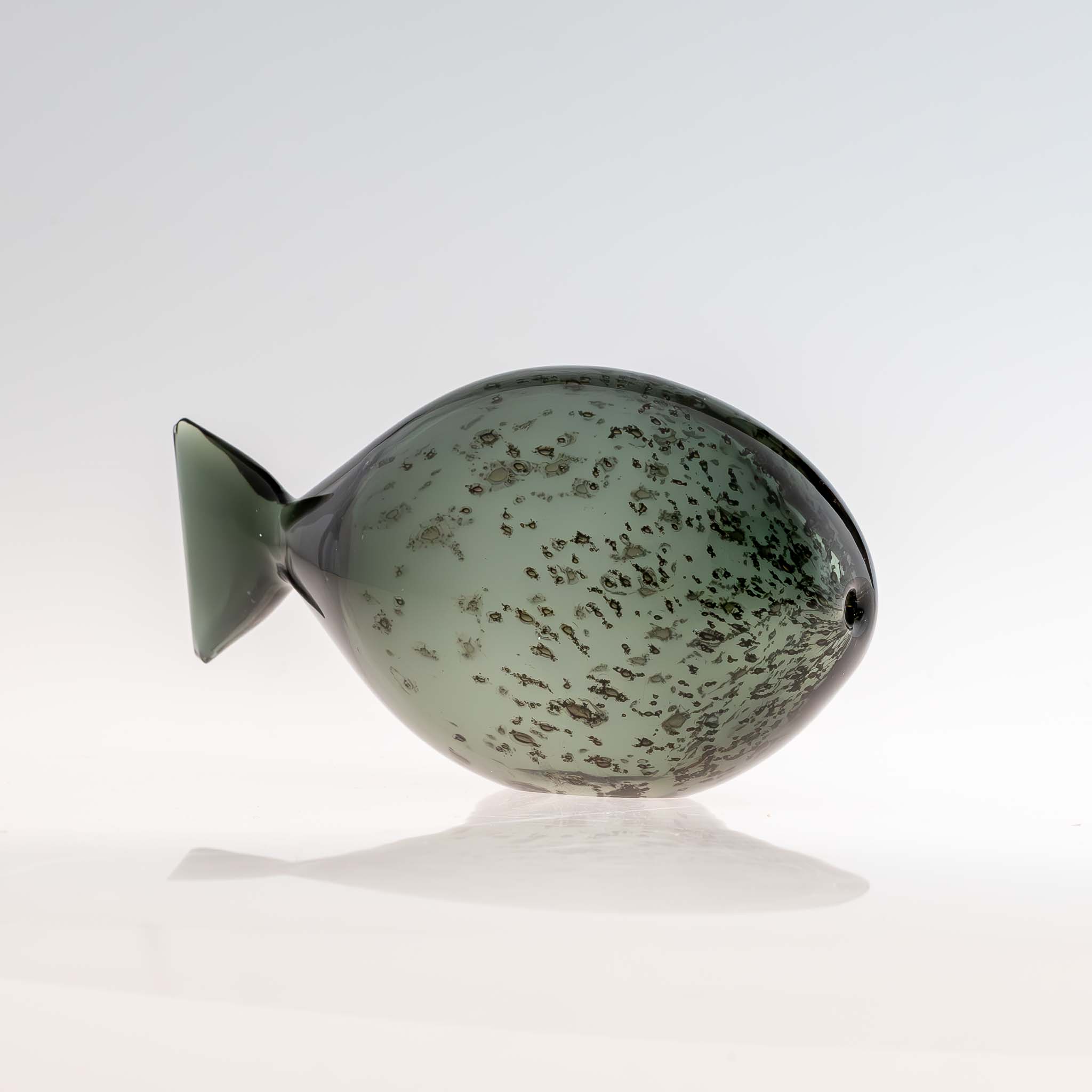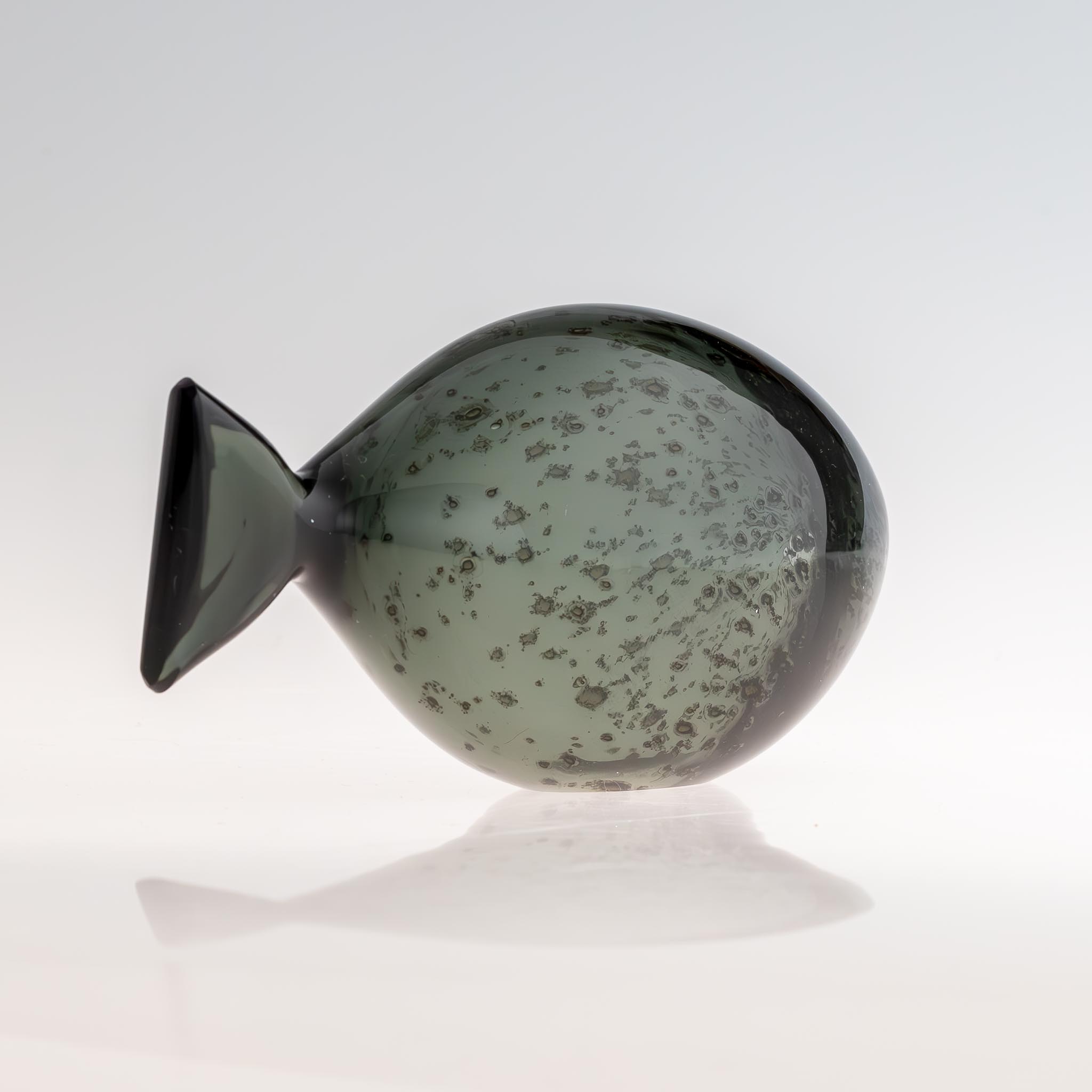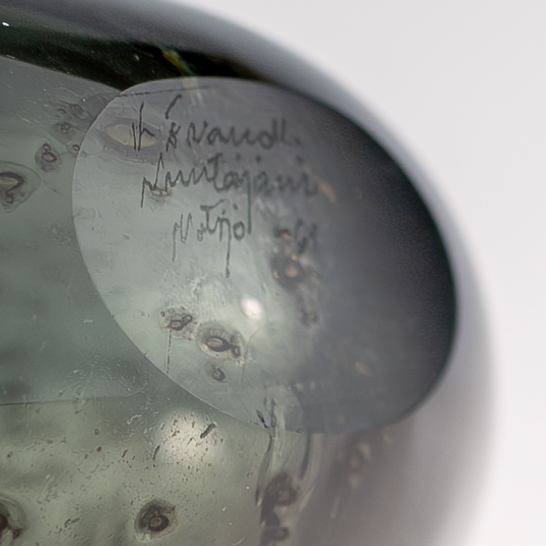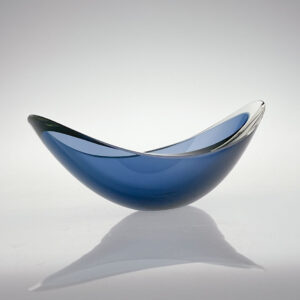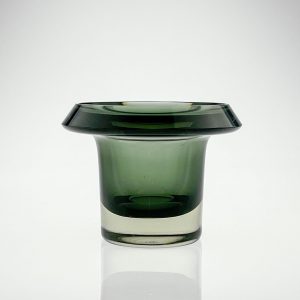| Marked | Signed underneath the base: K. Franck Nuutajärvi-Notsjö '61 (1961) |
|---|---|
| Execution | Nuutajärvi-Notsjö glassworks, Finland 1961 |
| Condition | This Ruutana is in good condition. Some light scratches and wear consistent with age and use. No chips or cracks. |
| Literature | Marianne Aav (ed.), Kaj Franck, Universal Forms, p.323 |
| Dimensions | Height 9,8 cm |
Kaj Franck – A glass art-object “Ruutana”, model KF 226 – Nuutajärvi-Notsjö Finland, 1961
SOLD
Uitverkocht
An art-object in the shape of a fish (‘Ruutana’ or Crucian Carp), made of green lead glass with tin crush bubbles. Free-blown with ground and polished base, stylised flattened ovoid body with shaped tail.
This “Ruutana” is model KF 226 in the series of art-objects designed by Kaj Franck. It was produced between 1954 and 1962 by the Nuutajärvi-Notsjö glassworks, winning the Diplôme d’Honneur at the Milan Triennale in 1954. It is a stylised lifesize version of the Crucian Carp, a species widespread across Northern-Europe as far as the Arctic circle in Scandinavia.
The object is signed fully underneath the base: Kaj Franck – Nuutajärvi-Notsjö 61 (1961) and is in very good condition.
About Kaj Franck
Kaj Franck (Vyborg, Finland 1911 – Santorini, Greece 1989), a pioneering Finnish designer and a prominent figure in the Finnish art world from 1940 to 1980, left an indelible mark on the design landscape. Today, his name is synonymous with excellence and innovation, as exemplified by the prestigious “The Kaj Franck Design Prize,” which is annually awarded by the esteemed Finnish Design Forum.
Born in 1911 on the Finnish-Russian border into a family with a rich architectural heritage, Franck had design in his blood. His grandfather held a prominent position as the director of the renowned Arabia Ceramics factory, underscoring the influence and inspiration that surrounded him from an early age.
Franck pursued his passion for design by studying at the furniture department of Taideteollinen korkeakoulu, known today as the Aalto University School of Arts, Design, and Architecture, in Helsinki. Equipped with a solid foundation in design principles, he embarked on a career as a freelance designer before joining Arabia in 1945. It was during his time at Arabia that Franck’s talent truly flourished, and in 1950, he assumed the role of the company’s Artistic Director.
While his contributions to Arabia were significant, Franck’s creative vision extended beyond ceramics. He also designed glass objects for Iittala between 1946 and 1950, and later for Nuutajärvi-Notsjö glassworks from 1950 to 1976. His designs, particularly in everyday tableware and glassware, propelled him to the forefront of the design world. Notably, his iconic Kilta tableware and Kartio glassware are celebrated as revolutionary and enduring symbols of classic Finnish design.
Franck’s design philosophy embodied a profound commitment to principles of moderation, ecology, and equality. Often referred to as “the conscience of Finnish design,” he advocated for minimalism and the conscious reduction of everyday objects, emphasizing the importance of sustainability and product life cycles. Franck’s designs were a testament to his belief that beauty and functionality could coexist harmoniously, enhancing the lives of individuals while respecting the environment.
Recognized for his exceptional contributions, Franck’s works grace the collections of esteemed museums worldwide. Noteworthy institutions such as the Design Museum Helsinki, the Museum of Modern Art in New York, the Stedelijk Museum Amsterdam, and The British Museum in London all proudly display his creations. Throughout his illustrious career, Franck received numerous accolades, including the prestigious Lunning Prize in 1955, as well as “Grand Prix” and multiple “Gold Medals” at the renowned Triennale di Milano.
Kaj Franck’s enduring legacy rests not only on his remarkable designs but also on his unwavering commitment to advancing the field of design. His vision, which emphasized sustainability, simplicity, and social consciousness, continues to inspire designers and enthusiasts alike, ensuring that his influence will be felt for generations to come.


